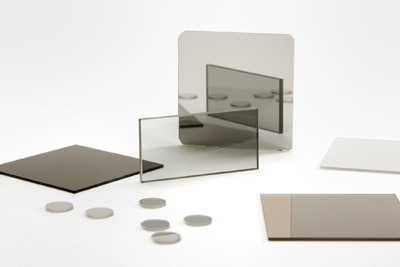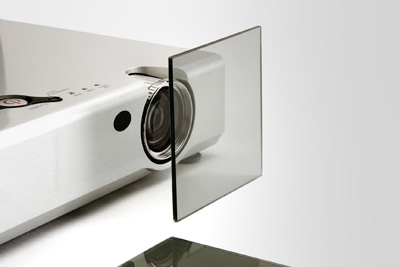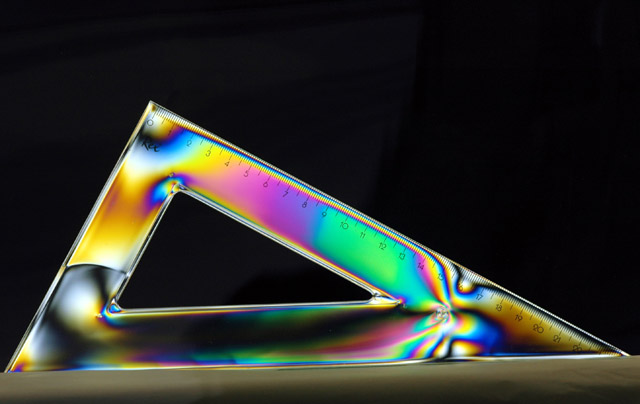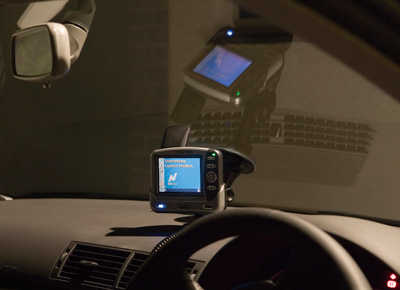Polarisers
Polarisers are used to analyse or create polarized light. Using a dicroitic polymer sheet base, we can offer a wide range of options including sizes, polarization and light transmission.
Common applications:
-
Contrast enhancement display filters
-
Sunlight readable touch screens
-
Photography
-
Stress analysis of glass and plastics
-
Optical sensors and safety light curtains
-
3D projection systems
-
Ophthalmology

The original material, patented in 1929 and further developed by Edwin Land as the H-type, is a polyvinyl alcohol (PVA) polymer impregnated with iodine. During manufacture, the PVA polymer chains are stretched such that they form an array of aligned, linear molecules in the material. The iodine dopant then attaches to the PVA molecules, making them conductive along the length of the chains. Light polarized parallel to the chains is absorbed, and light polarized perpendicular to the chains is transmitted.
The H-type technical range of polariser was made by Polaroid up until December 2004, when the former owners of 3M closed the production of iodine based polariser material.
With extensive experience and knowledge in the field of iodine based polariser, Visiontek Systems was a long-standing and value added reseller for Polaroid. Although these polarisers have been retired, we continue to source and manufacture the best quality PVAL based technical polarisers such as, linear and circular polarisers as alternatives to the old Polaroid range. We also offer new variations to suit modern applications and markets.
In addition to the supply of the filter material in sheets, we offer full manufacturing service to cut and finish parts to final size. Full optical lamination in glass and plastic is also available.

Un-polarized light is a complex
mixture of random wavefronts
transverse to the line of travel.
Linear polarizing filters
selectively absorb light vibrations
in certain planes. When light passes
through a linear polariser, its
vibrations are confined to a single
linear plane.

A circular polariser is a
combination of a linear polariser
and a ¼ wave retarder oriented at
45° that twists the light into a
circular form. A ray of unpolarized
light passing through the linear
polariser becomes polarized at 45°
to the axis of the retarder. When
this polarized light ray passes
through the retarder, its vibration
direction moves in a helical
pattern. After the light ray is
reflected from a specular surface,
the sense of rotation of the
vibration reverses. This rotation is
then stopped and in return, sent
through the retarder. The light ray
is now linearly polarized in a plane
90° to its original polarization
plane, and is absorbed by the
linearly polarized component of the
circular polariser.
Circular polarisers are highly effective at eliminating sun light "wash out" caused by ambient light reflected from the display.

Retarders are made of bi-refringent
material. The phase shift is
dependent on the orientation of the
material producing a modified
polarized state. For example, to
create a circular polariser the
phase must be a ¼ wavelength.
3D Polariser filters

For passive 3D imaging, two images must be separated for each of the viewers' eyes, typically done by projecting images through linear polarisers, which are at perpendicular angles. The viewer wears linear polarized glasses at complimentary angles to the projected images so that each eye can only see the appropriate image.
Please contact us for more information on the supply of the linear polariser filters for this 3D application.
Photo elastic Stress Analysis

Utilizing polarized light is imperative otherwise, invisible stress in transparent material can be seen. It shows both the location and intensity of the stress. For example, in injection moulding, extruded sheets and cast plastics.
Please contact us for more information on the supply of the polarisers for this stress analysis.
Polarized Sunlight readable touch screens

Sunlight readability is a big problem with resistive touch screens. The combination of badly index matched air gaps and reflective ITO coating results in a barely readable display.
The addition of a polariser and, in some applications a retarder as well, dramatically improves the contrast ratio of resistive touch screen displays. Typical applications that benefit from this technology are portable equipment, marine on deck displays, outdoor displays, avionics head down displays and in-vehicle HMI.